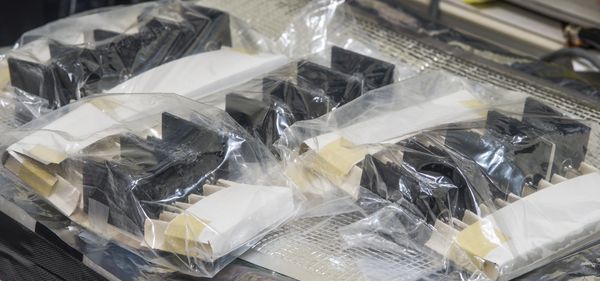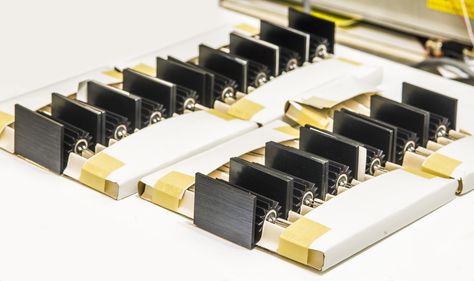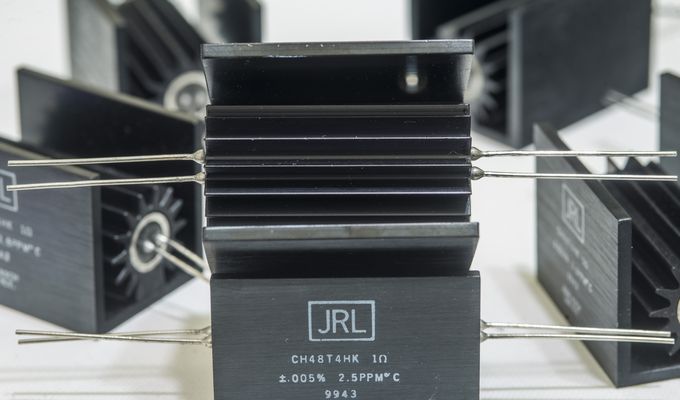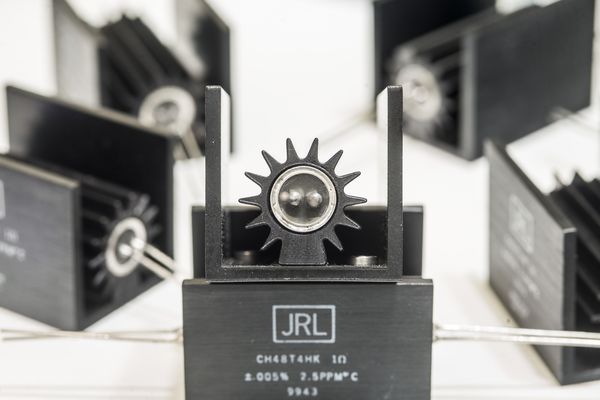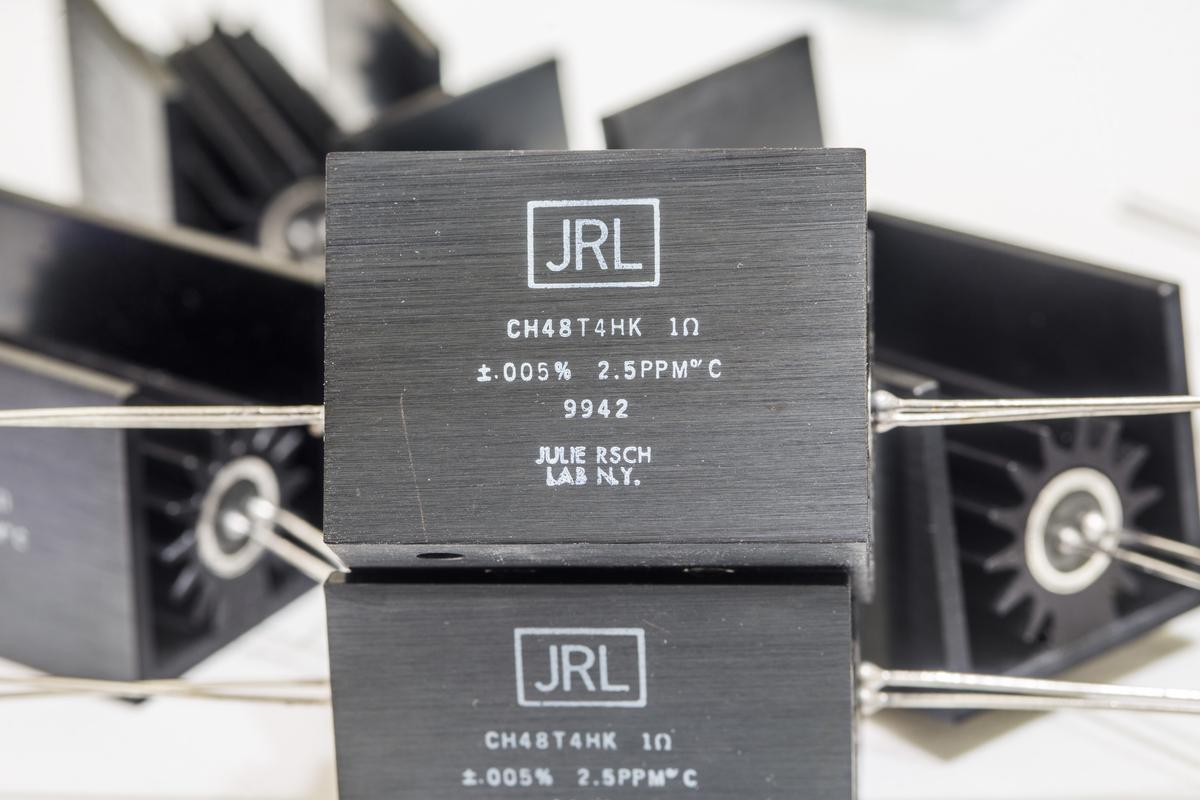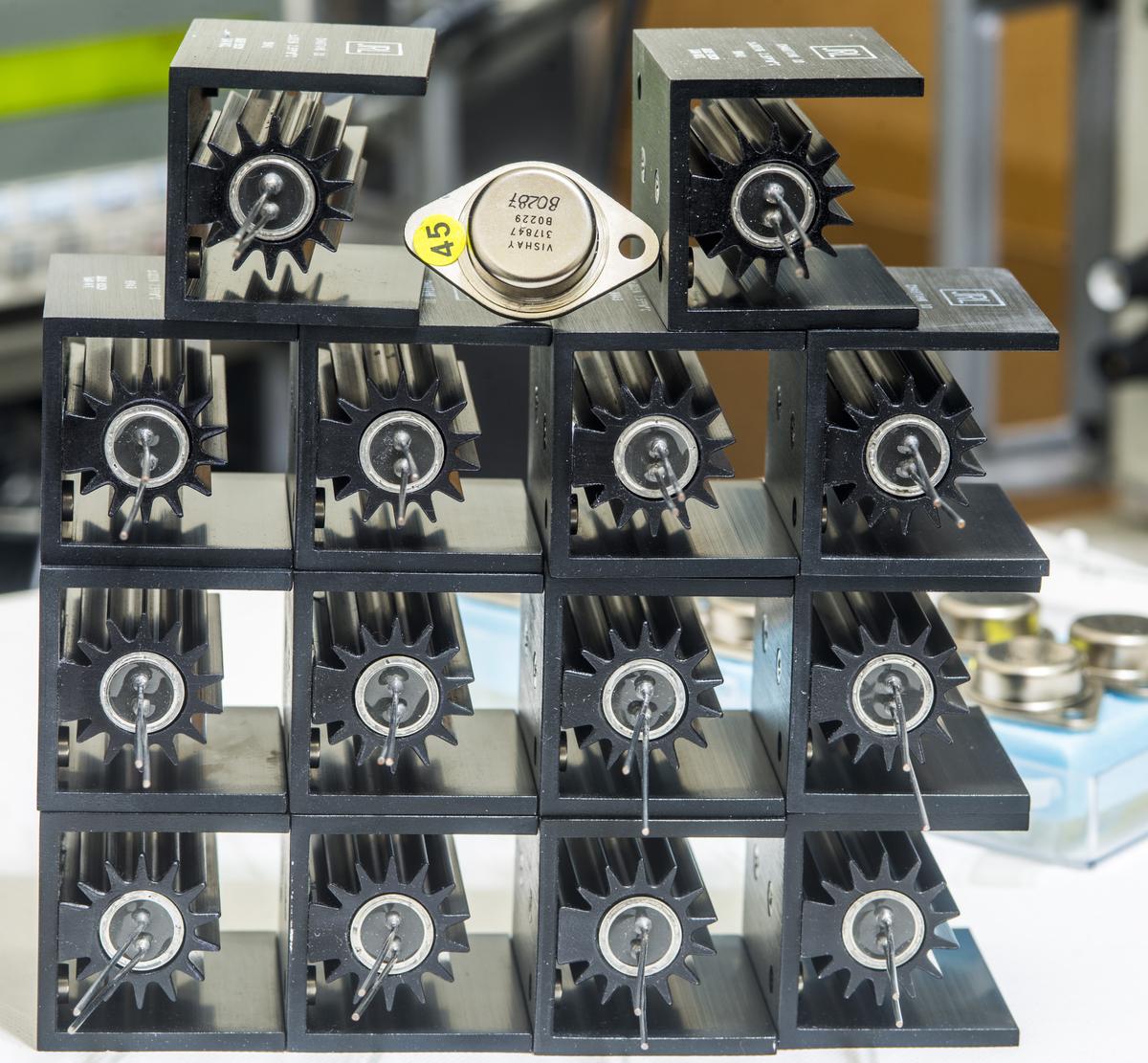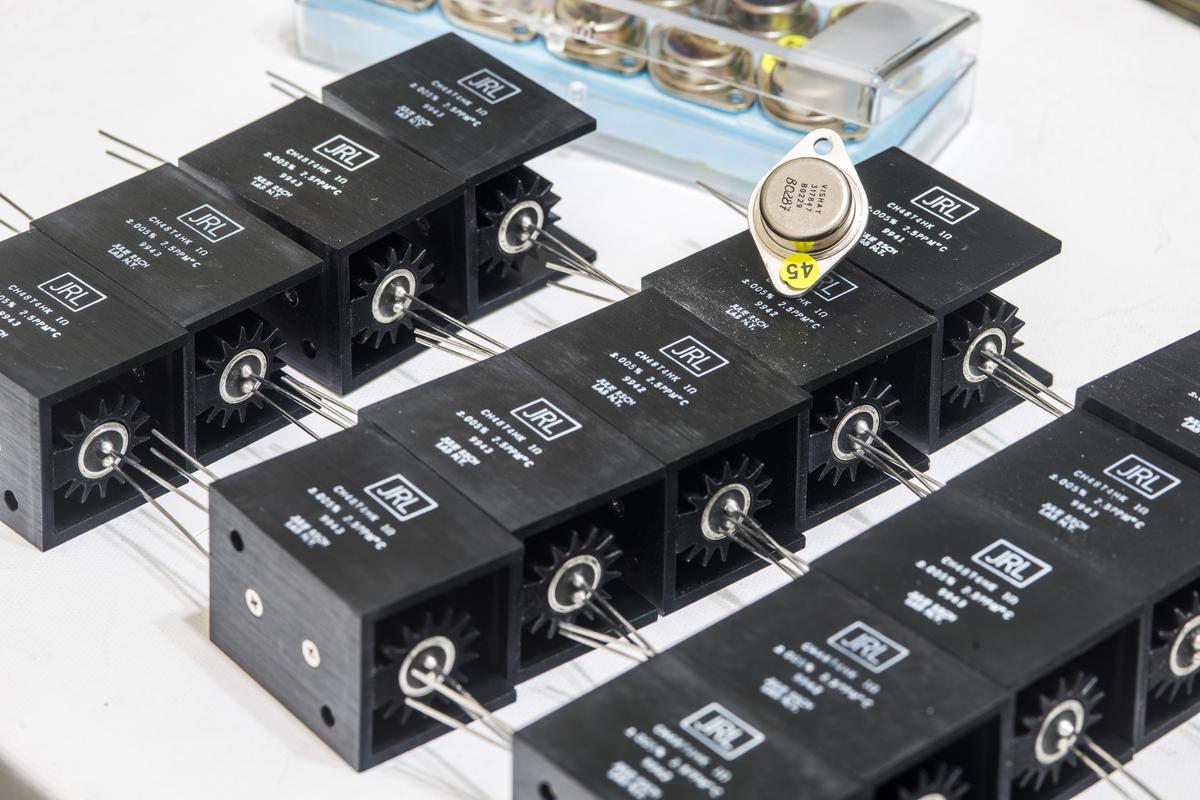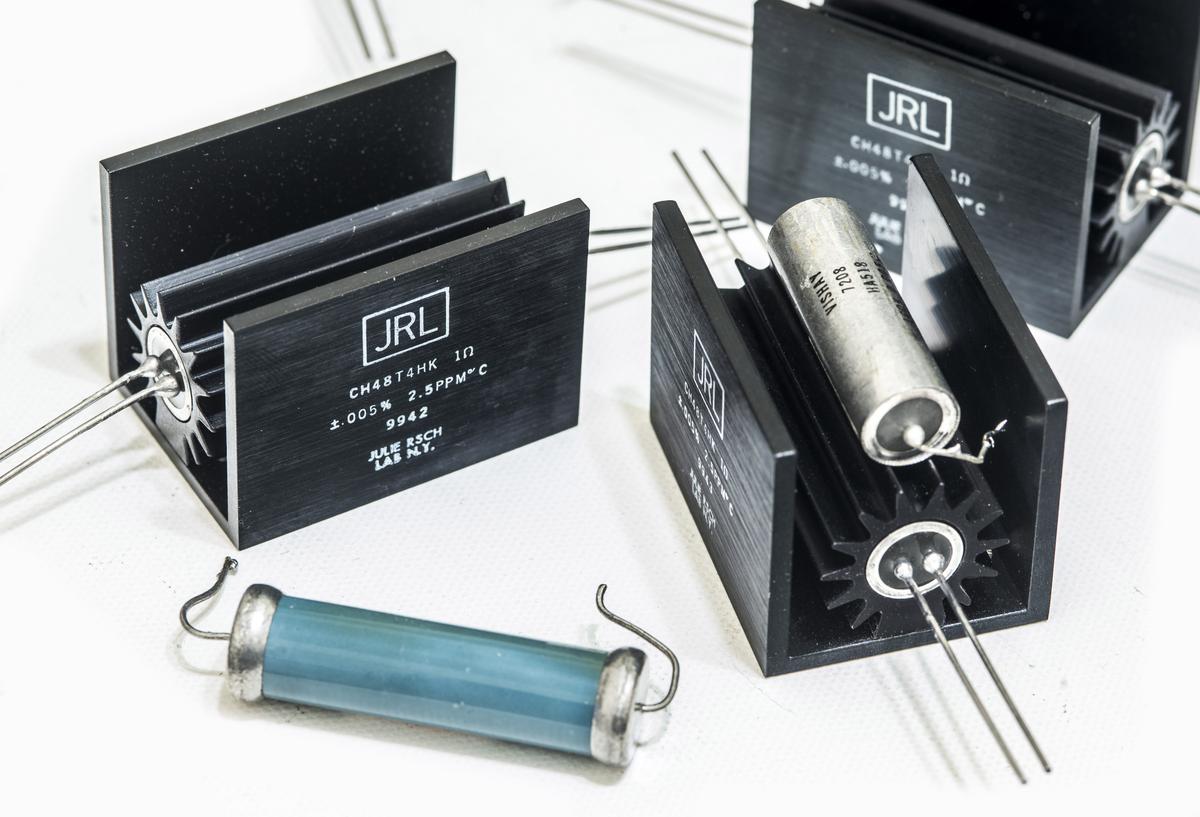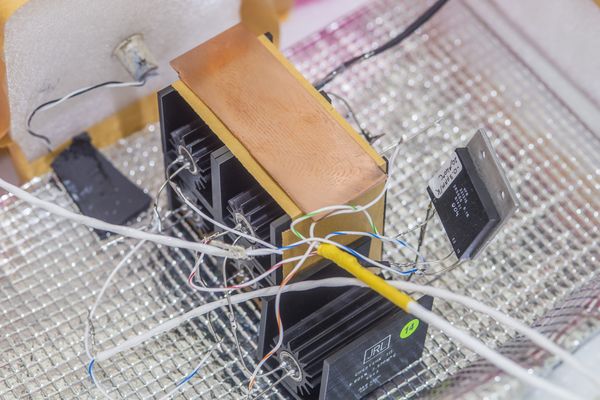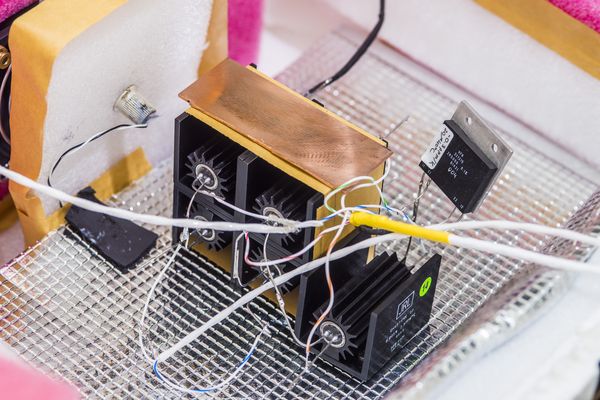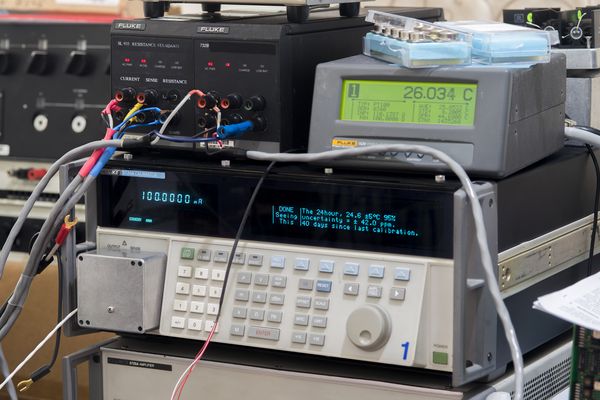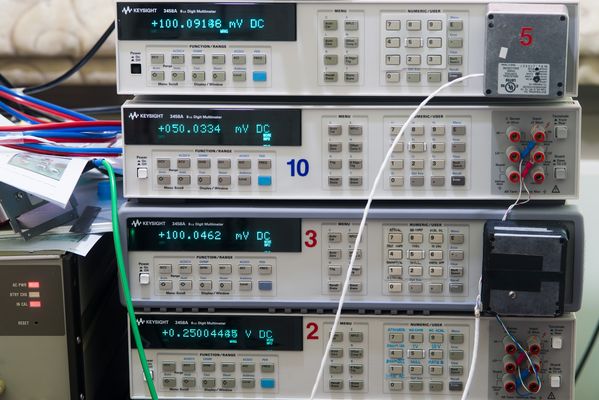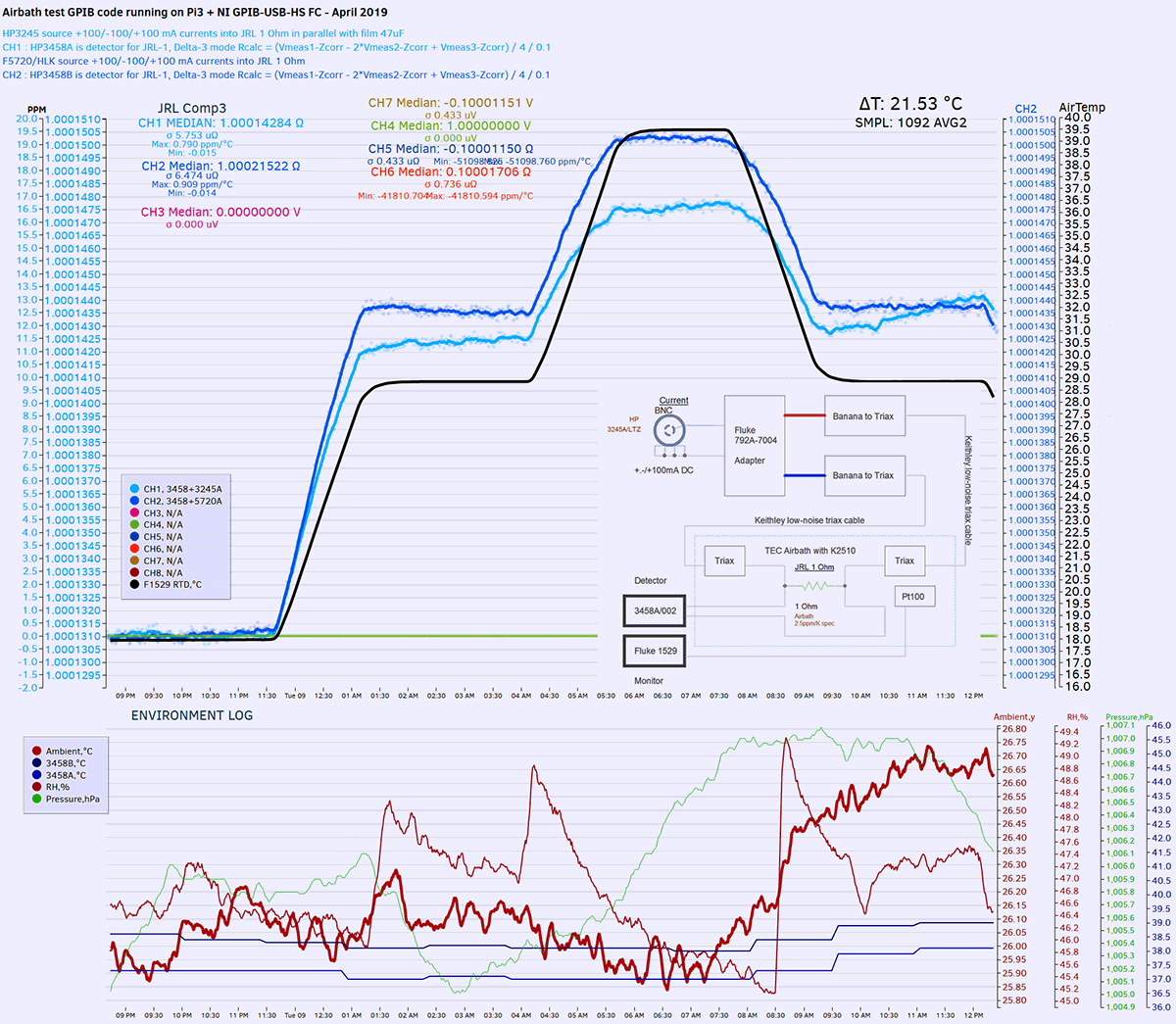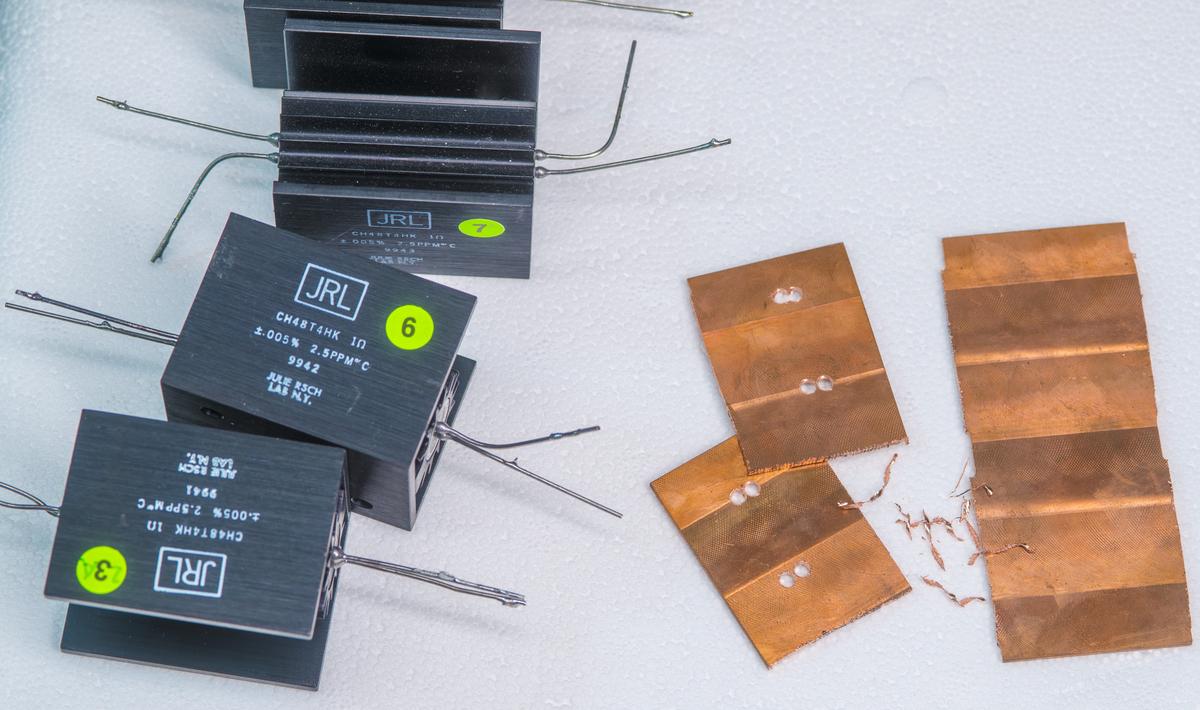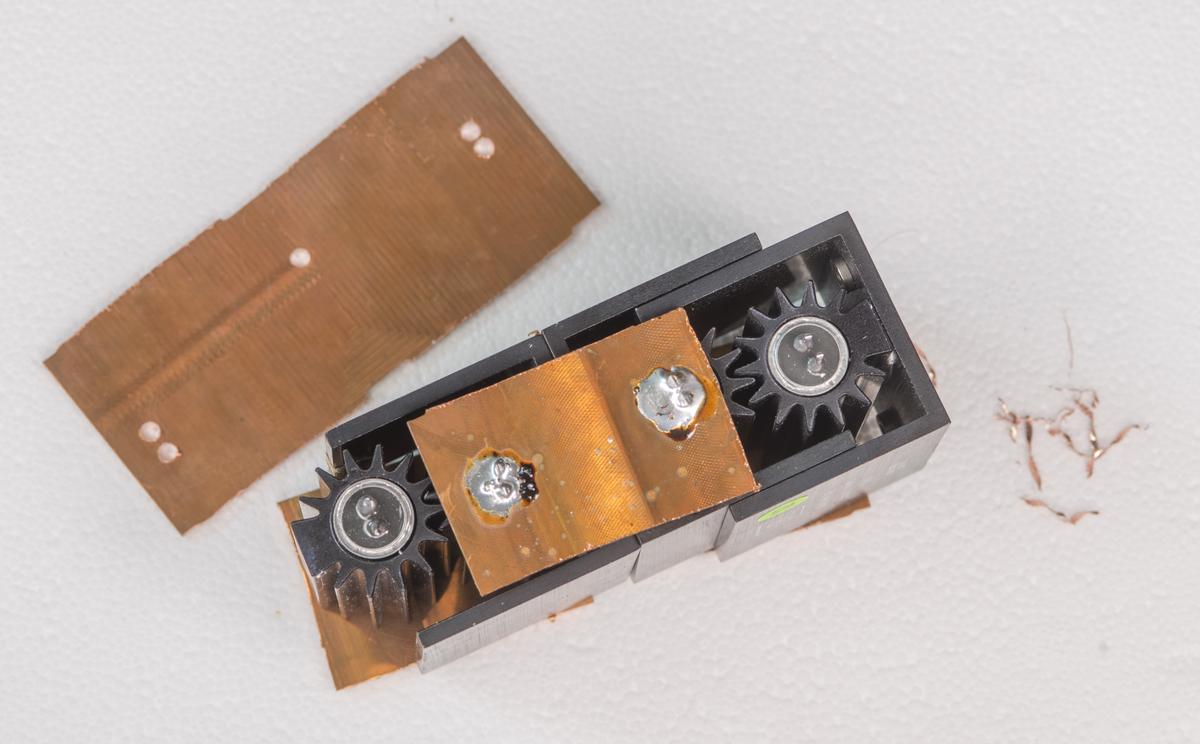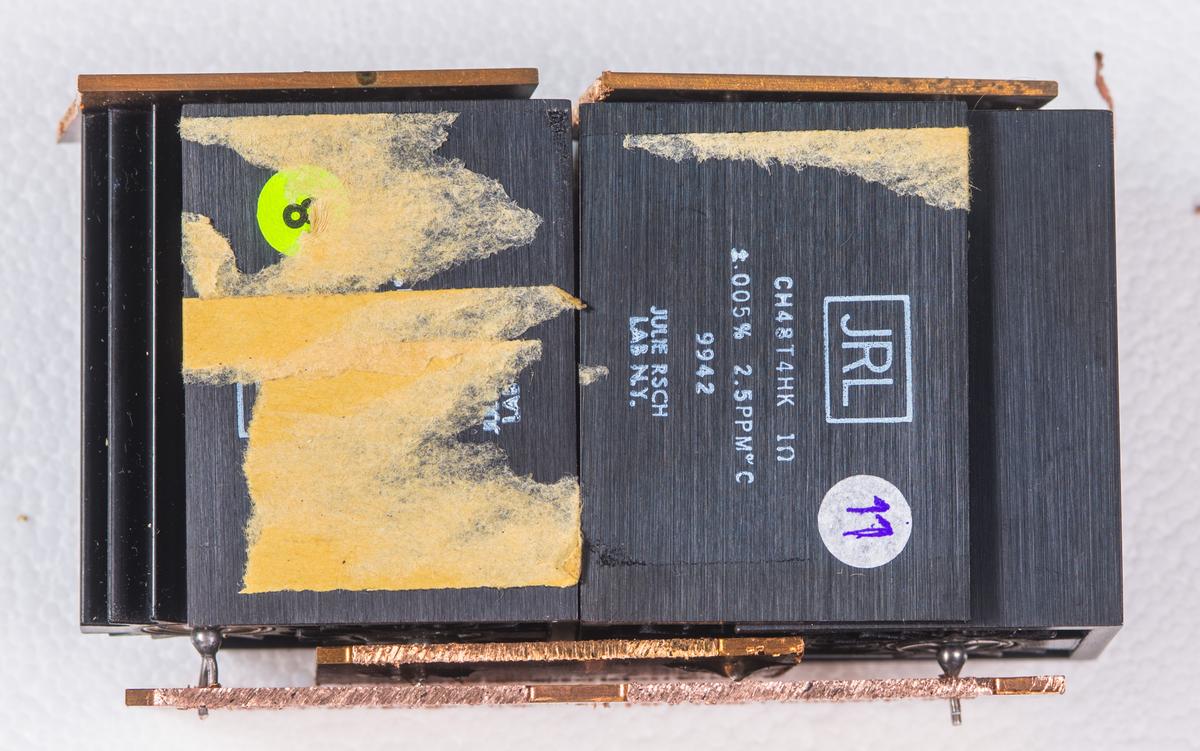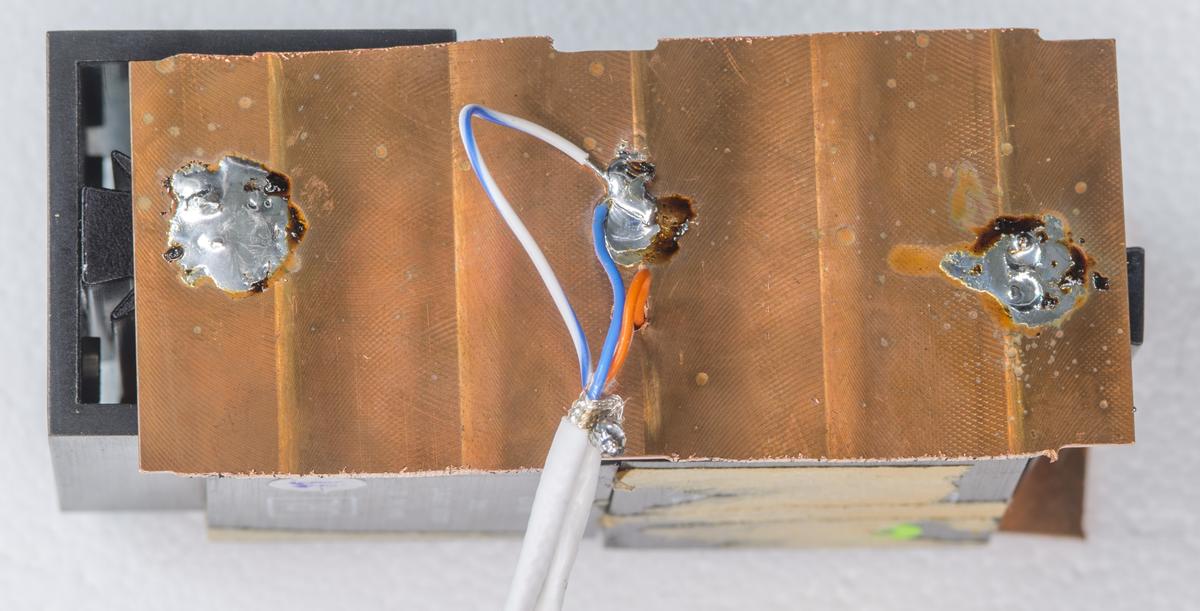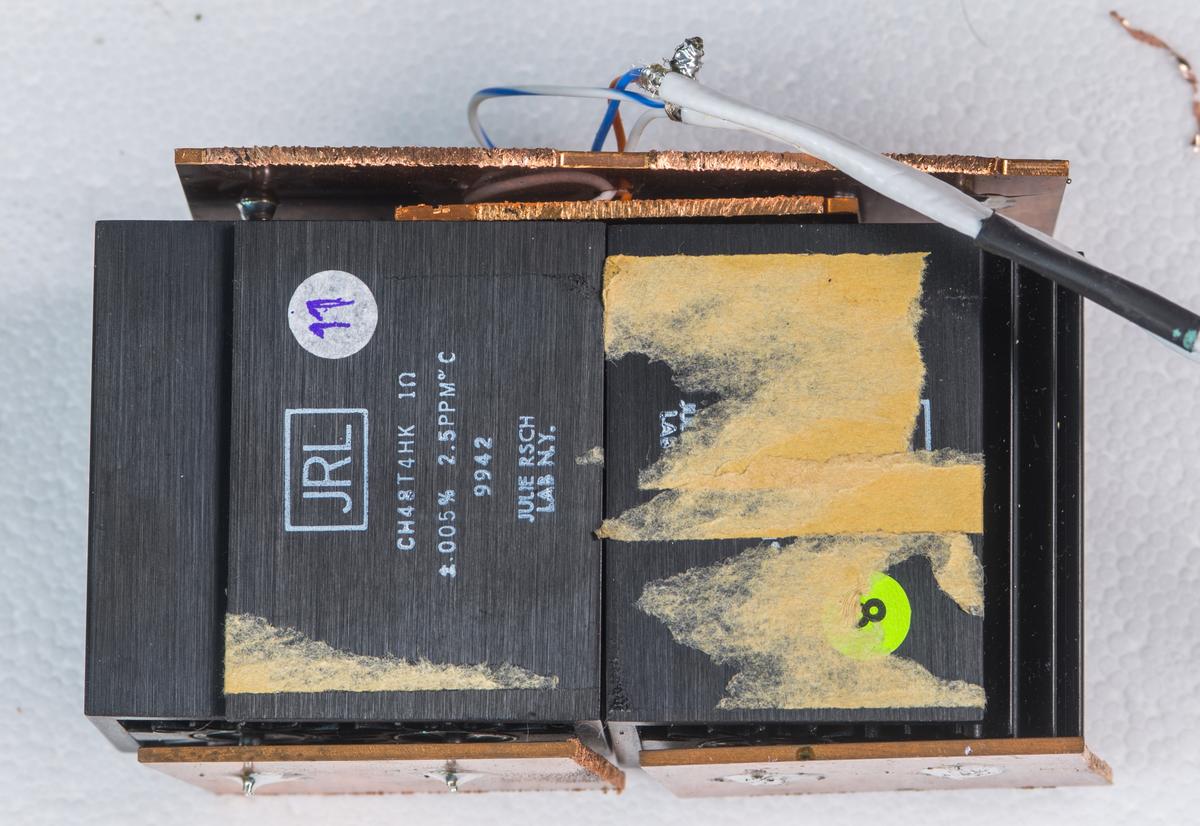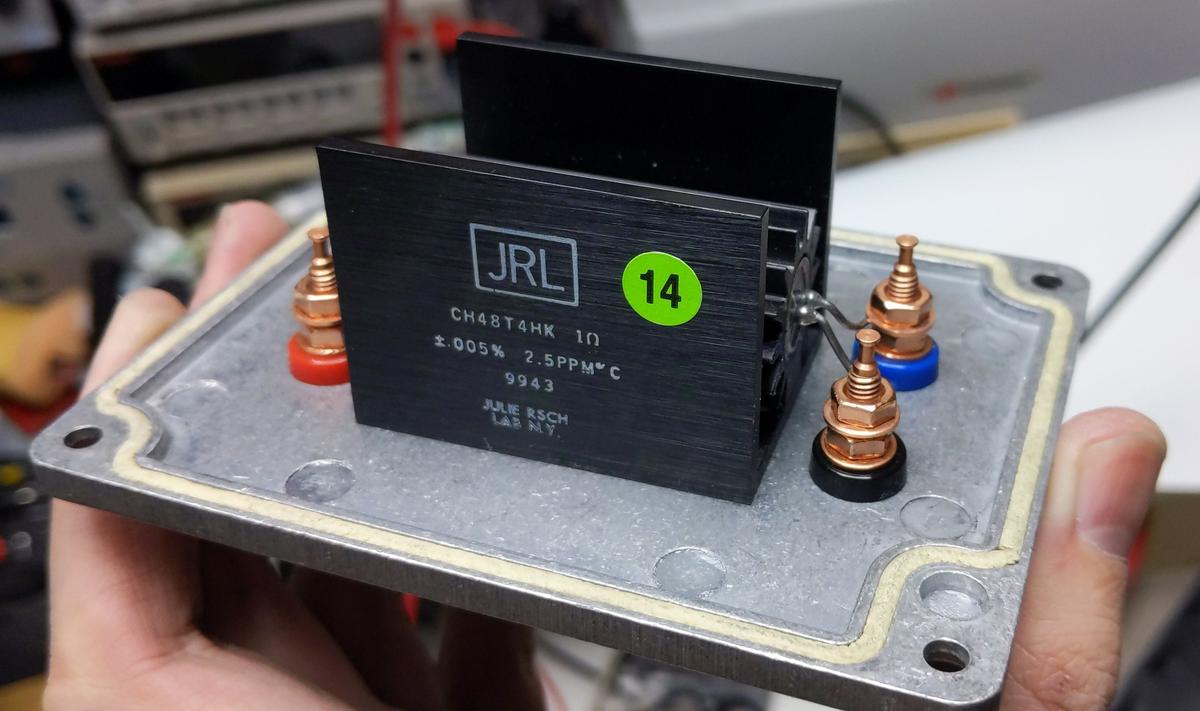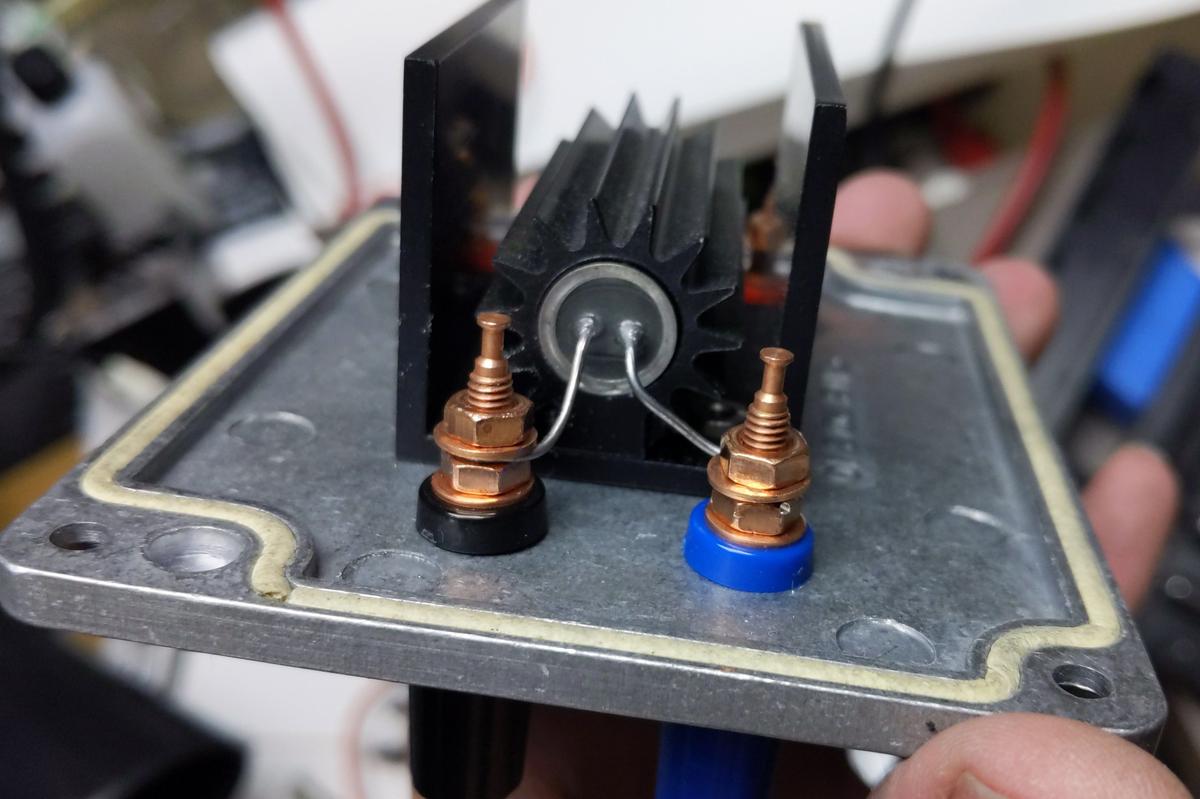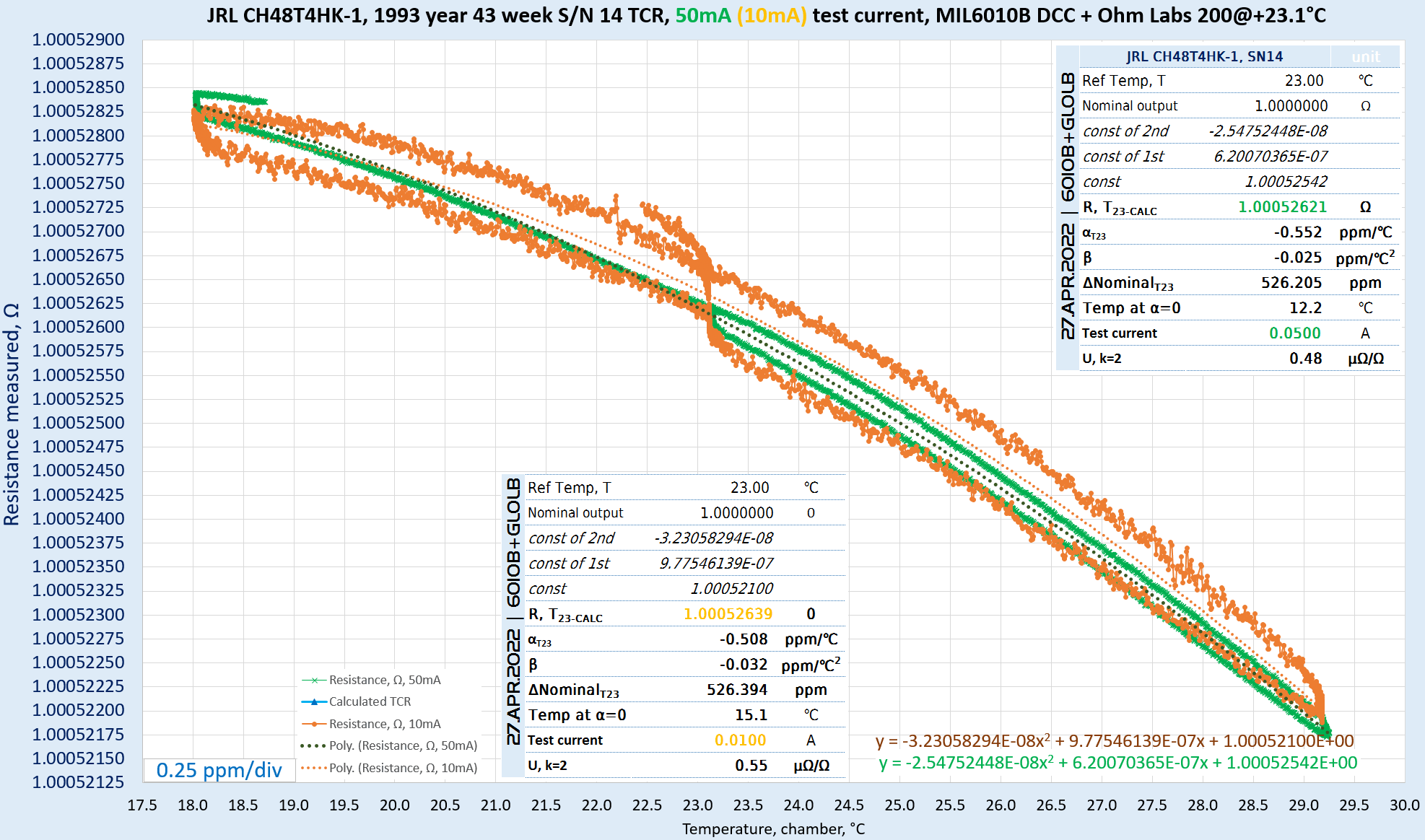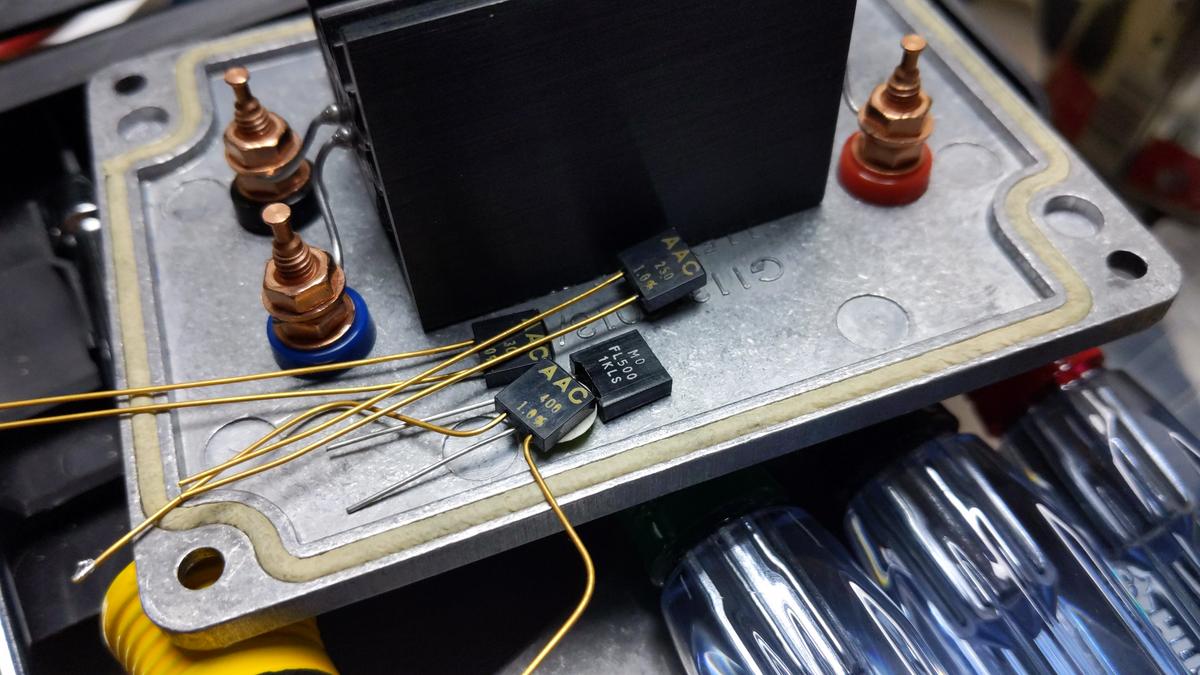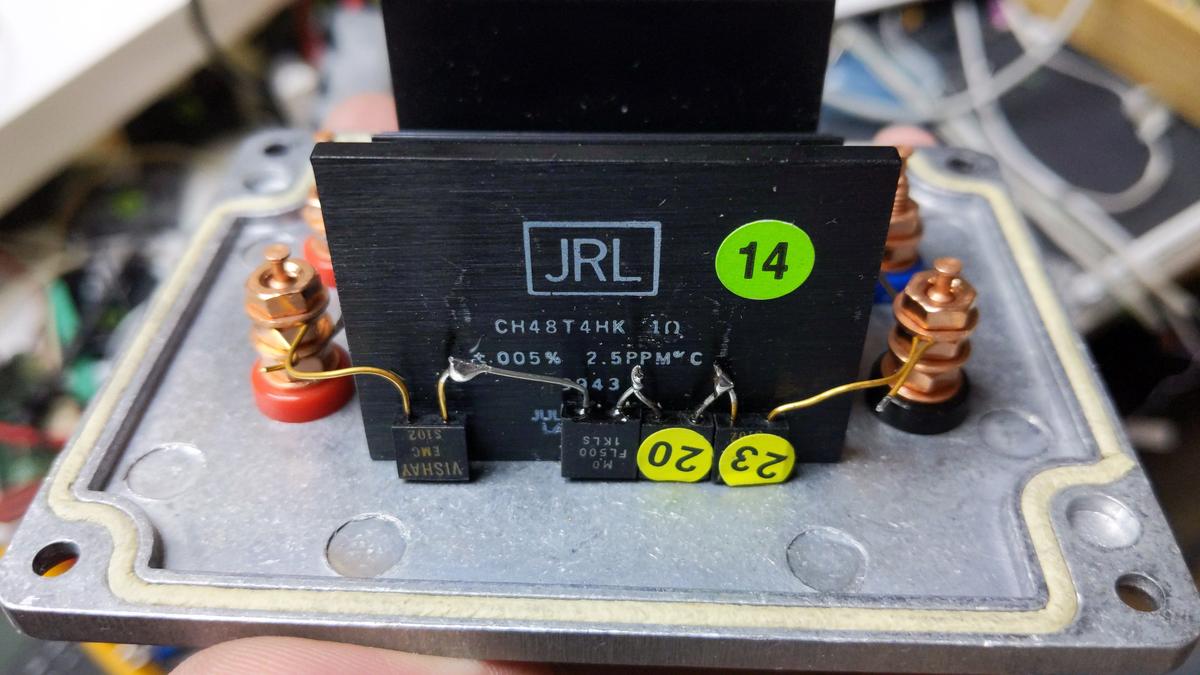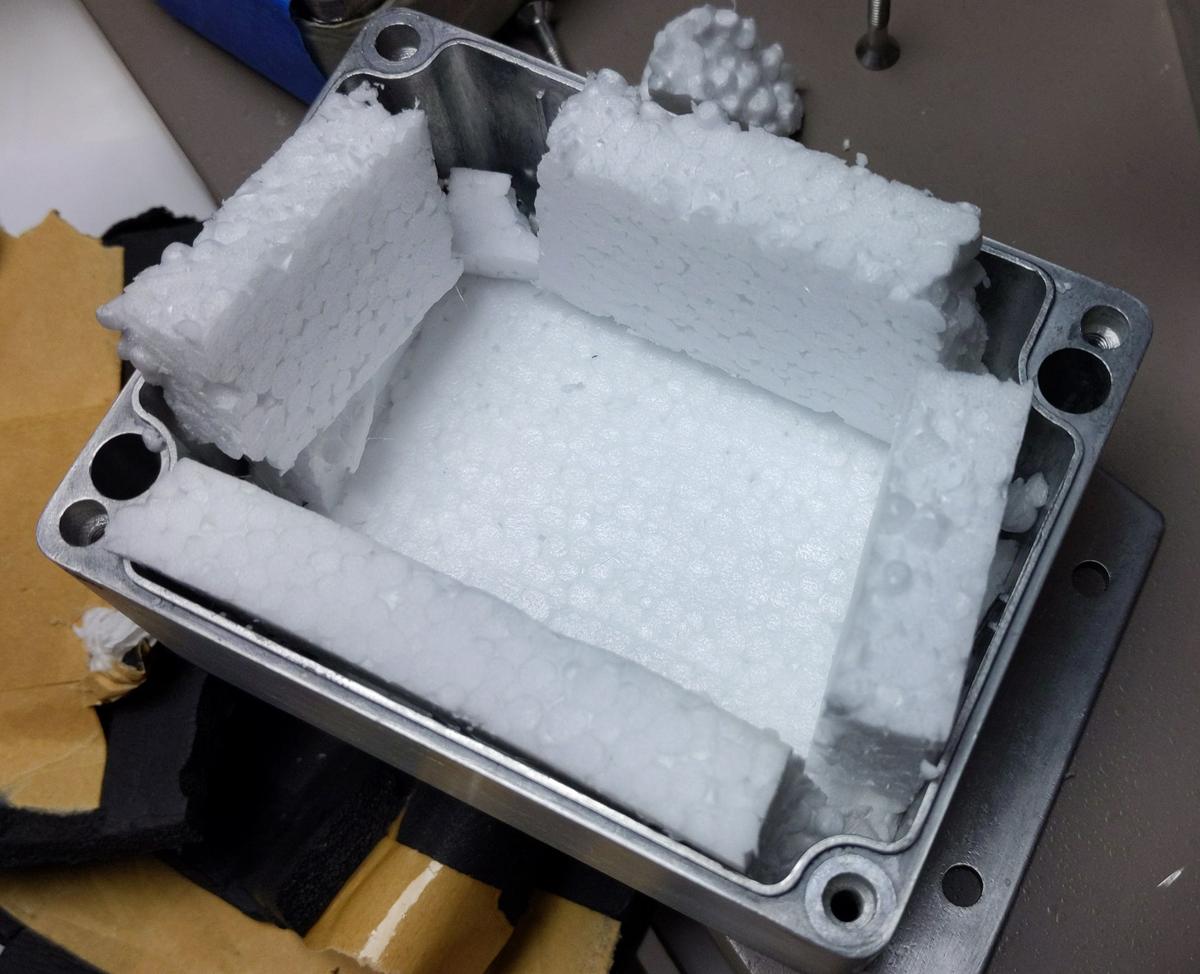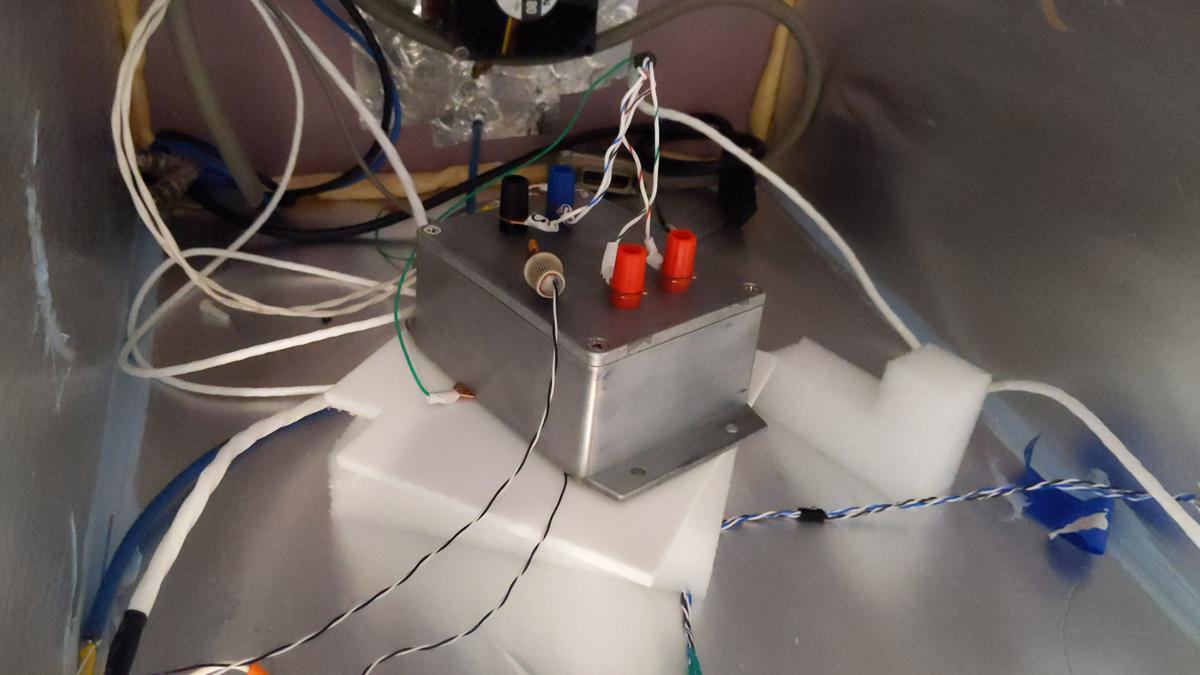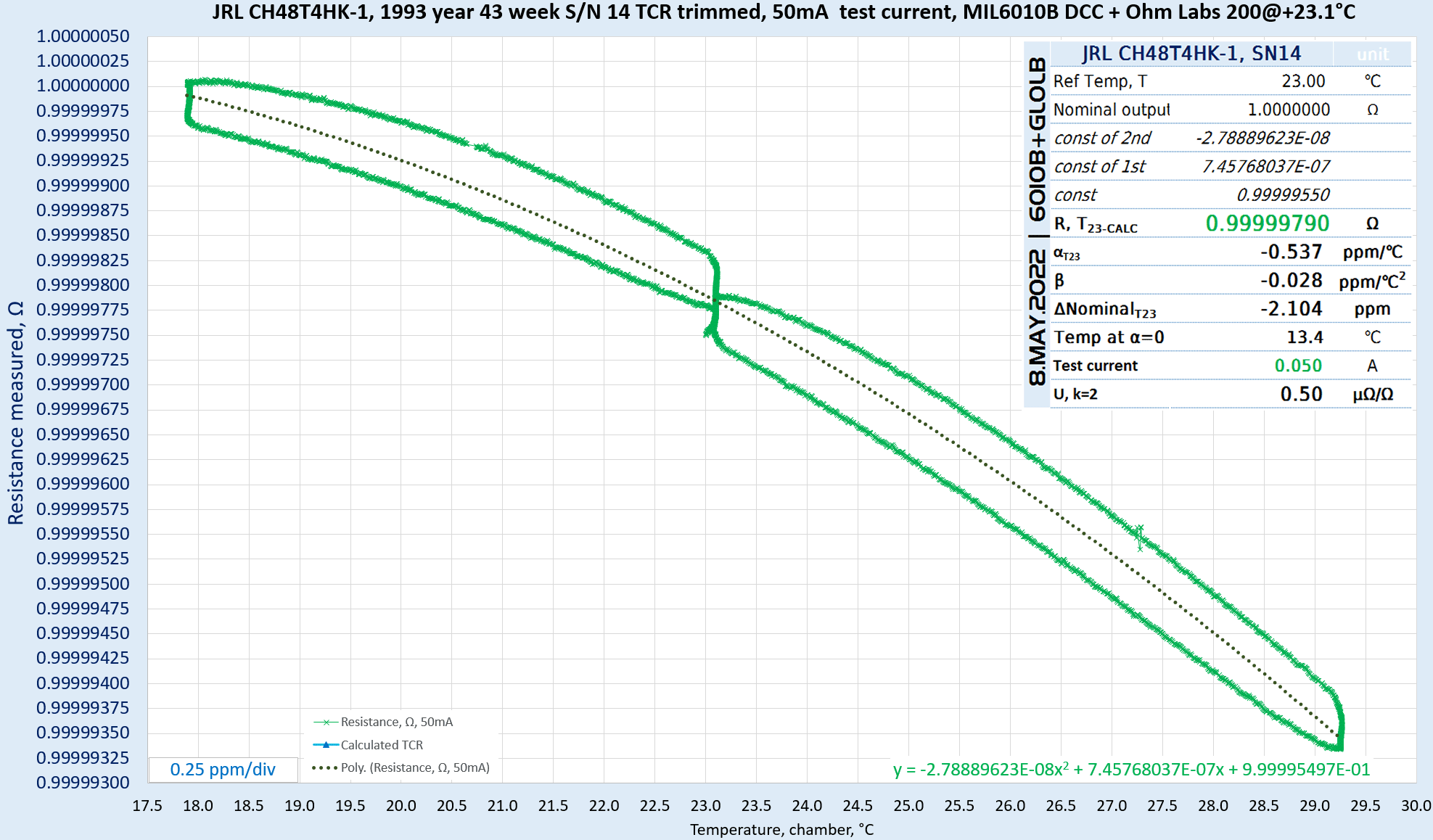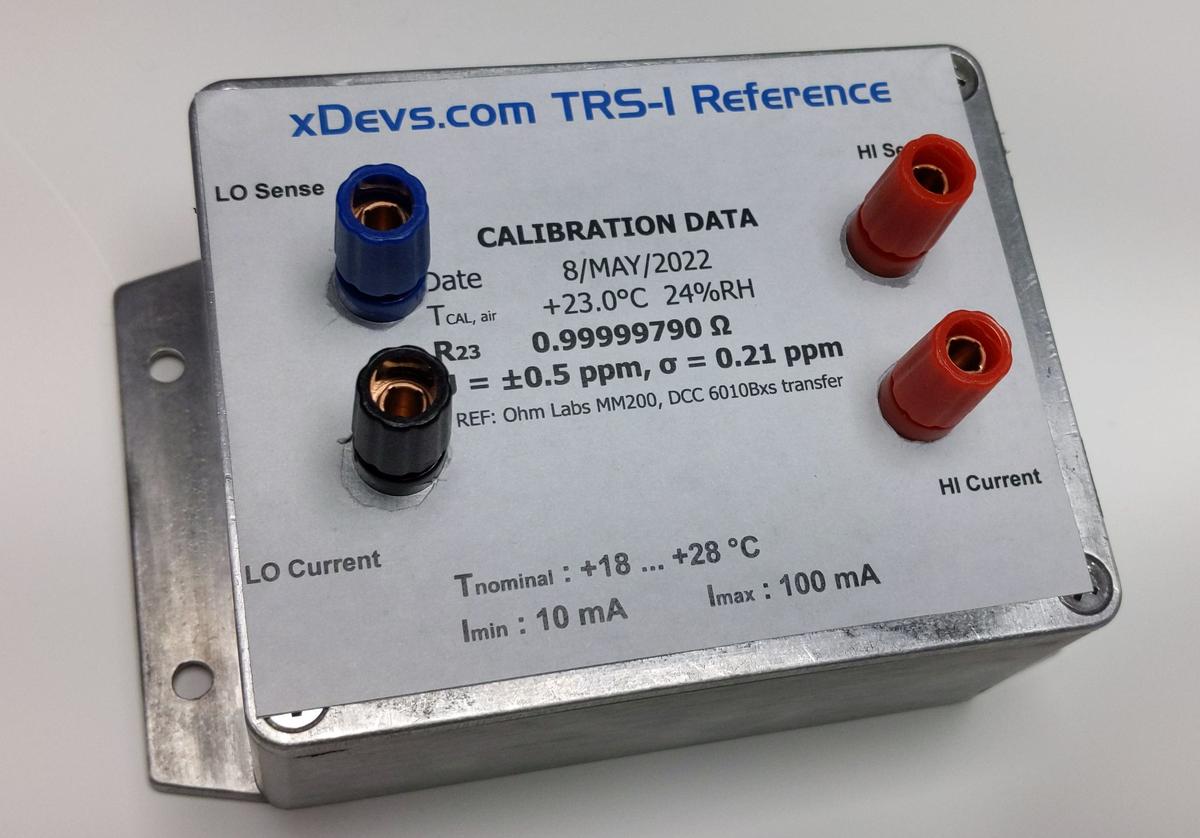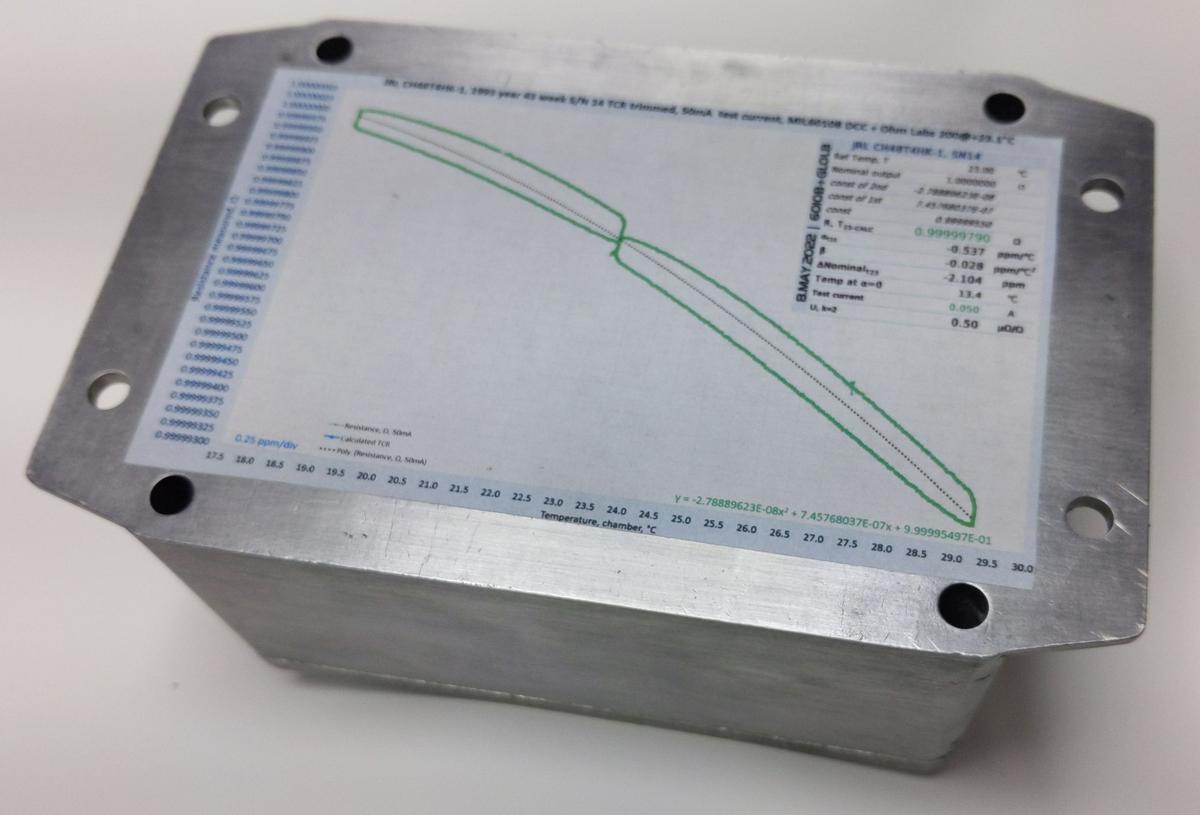Precision Hermetic High-current JRL 1 Ω resistors
Pack of JRL 1 Ω resistor and VPG VHP-4 custom 1 Ohm sample.
JRL 1 Ω resistor in comparison with MPX porcelain wirewound and Vishay Precision Group VHA518 series resistors.
Summary results table:
| Resistor sample | Measured value | TCR (Box method, max-min/32 °C span) | Notes | Date |
|---|---|---|---|---|
| 10 | 1.00046130 Ω | +2.17 ppm/K +18…+50 °C | Delta-3 +100/-100/+100 mA 5720+3458 | 3/19/2019 |
| 2 | 1.00018120 Ω | +2.13 ppm/K +18…+50 °C | Delta-3 +100/-100/+100 mA 5720+3458 | 3/19/2019 |
| 1 | 1.00017325 Ω | +1.67 ppm/K +18…+50 °C | Delta-3 +100/-100/+100 mA 5720+3458 | 3/20/2019 |
| 13 | 1.00059168 Ω | +1.56 ppm/K +18…+50 °C | Delta-3 +100/-100/+100 mA 5720+3458 | 3/19/2019 |
| 9 | 1.00032809 Ω | +1.38 ppm/K +18…+50 °C | Delta-3 +100/-100/+100 mA 5720+3458 | 3/20/2019 |
| 5 | 1.00019906 Ω | +0.69 ppm/K +18…+50 °C | Delta-3 +100/-100/+100 mA 5720+3458 | 3/20/2019 |
| 4 | 1.00012086 Ω | +0.57 ppm/K +18…+50 °C | Delta-3 +100/-100/+100 mA 5720+3458 | 3/20/2019 |
| 7 | 1.00030387 Ω | +0.44 ppm/K +18…+50 °C | Delta-3 +100/-100/+100 mA 5720+3458 | 3/20/2019 |
| 12 | 1.00050620 Ω | +0.21 ppm/K +18…+50 °C | Delta-3 +100/-100/+100 mA 5720+3458 | 3/21/2019 |
| 11 | 1.00039291 Ω | -0.72 ppm/K +18…+50 °C | Delta-3 +100/-100/+100 mA 5720+3458 | 3/21/2019 |
| 8 | 1.00058605 Ω | -0.76 ppm/K +18…+50 °C | Delta-3 +100/-100/+100 mA 5720+3458 | 3/21/2019 |
| 3 | 1.00085428 Ω | -1.35 ppm/K +18…+50 °C | Delta-3 +100/-100/+100 mA 5720+3458 | 3/21/2019 |
| 6 | 1.00055981 Ω | -2.26 ppm/K +18…+50 °C | Delta-3 +100/-100/+100 mA 5720+3458 | 3/22/2019 |
| 14 | 1.00052621 Ω | -0.704 ppm/K +18…+29 °C | DCC 50 mA 6010B vs GLOL-B | 8/MAY/2022 |
I assembled units 4+5+8+11 together in series-parallel to see if can improve TCR. Also I plan to test these resistors with higher currents, like +1/-1/+1A 3-measurement Delta mode and test their PCR.
We can try later a test in series with Fluke SL935 1 Ω, using same current thru DUT and RSTD.
I know +50 °C is too high for standard resistors, but these are still considered power resistor and rated 20ppm/-30…+85C stress.
Also good idea to find a replacement for Fluke 5720A as current source for these tests, together with 3458A as detector.
Tried Keithley 6221, in same python method with 3-point Delta-measurement:
z) Measure zero range offset of 3458A at 0mA source before test begin (Zcorr)
a) Apply +100mADC, measure 3458 100mV over JRL (Vmeas1)
b) Reverse -100mADC, measure 3458 -100mV over JRL (Vmeas2)
c) Apply +100mADC again, measure 3458 100mV over JRL (Vmeas3)
d) Calculate resistance by = (Vmeas1-Zcorr – 2*Vmeas2-Zcorr + Vmeas3-Zcorr) / 4 / 100mA
Results from 6221+3458 were much worse than 5720+3458, due to current noise of 6221 100mA range.
Now doing test with my HP 3245A + 3458A. Result is very good, same as 5720. 3245A does not have relay to do current polarity reversal, so that is big improvement. Sdev on 1 Ohm resistance is about +/-0.3 ppm using this setup.
Keep in mind my 3245A is not standard, I modified it before with KX LTZ1000A reference instead of stock LM399.
I will also try Agilent 4142B (41420A modules) parametric analyzer and Keithley 2400 as current source, but i think those will be more noisy.
JRL 2P2S combination test
First simple idea was to combine four of the best JRL resistors to make one higher current precision resistance unit. To combine them 1.8 mm thick copper bars were used, soldered to small terminal stubs next to resistor bodies.
Combined resistor output was wired permanently to shielded twisted PTFE twinax. Wires soldered directly to copper bars middle points.
Ready for test:
However, tempco measurement were much worse than any of the individual resistors used in this combined assembly due to large temperature coefficient of copper leads and bars.
| Resistor sample | Measured value | TCR (Box method, max-min/32 °C span) | Notes | Date |
|---|---|---|---|---|
| Single 4 | 1.00012086 Ω | +0.57 ppm/K +18…+50 °C | Delta-3 +100/-100/+100 mA 5720+3458 | 3/20/2019 |
| Single 7 | 1.00030387 Ω | +0.44 ppm/K +18…+50 °C | Delta-3 +100/-100/+100 mA 5720+3458 | 3/20/2019 |
| Single 11 | 1.00039291 Ω | -0.72 ppm/K +18…+50 °C | Delta-3 +100/-100/+100 mA 5720+3458 | 3/21/2019 |
| Single 8 | 1.00058605 Ω | -0.76 ppm/K +18…+50 °C | Delta-3 +100/-100/+100 mA 5720+3458 | 3/21/2019 |
| Combined 4+7+11+8 with trim 432 Ω | 1.00000326 Ω | +6.80 ppm/K +18…+32 °C | Delta-3 +100/-100/+100 mA 5720+3458 | 12/29/2020 |
Travel reference box for international comparison experiment
JRL-1 resistance element S/N 14 was selected for international transfer experiment between xDevs US Lab and secret lab in EU. To reduce risk of damage to precision resistance element and unify measurement methods element was mounted inside die cast aluminum enclosure with low-thermal copper binding posts.
Initial measurement with MIL 6010B bridge was performed with two test currents, 10mA and 50mA. Obtained results were very close, well within expected uncertainty of the measurement.
Measurement with 10mA test current, using DCC against 0.9999985 Ω standard in air bath
Measurement with 50mA test current, using DCC against 0.9999985 Ω standard in air bath
This measurement resulted in measured -0.552 ppm/K α coefficient and -0.025 ppm/K2 β coefficient in resistance body temperature sweep from +18.0 °C to +29.3 °C. Such temperature coefficients were determined suitable to meet desired uncertainty target of 1 ppm around +23 °C ±1 °C laboratory conditions.
Initial measurement also shown offset +526.2 ppm off nominal 1 Ω.
This deviation was addressed by adding network of BMF elements in epoxy packages, similar to VPG S102 parts in parallel with JRL-1 resistance element.
Trim elements were soldered directly to JRL-1 current pins to ensure robust connection.
Then whole assembly was reassembled with some foam padding to secure internal parts in sealed box.
Standard was retested again in air-bath with same temperature sweep at fixed 50 mA current.
Measurement resulted in new corrected value at 0.99999790 Ω ±0.5 ppm at 50 mA current with metal body temperature +23.0 °C
Some labels were printed and bodged up on body of standard for further tracking purposes and ease of use during transfers in guest lab. Standard will be shipped with usual commercial shipping international services without rush timing or temperature control.
It’s ugly looking box due to limited time spent on its construction and benchmarks for sake of DIY-level experimentation.
Stay tuned for updates once we obtain additional data.
Modified: Jan. 9, 2023, 3:40 a.m.

